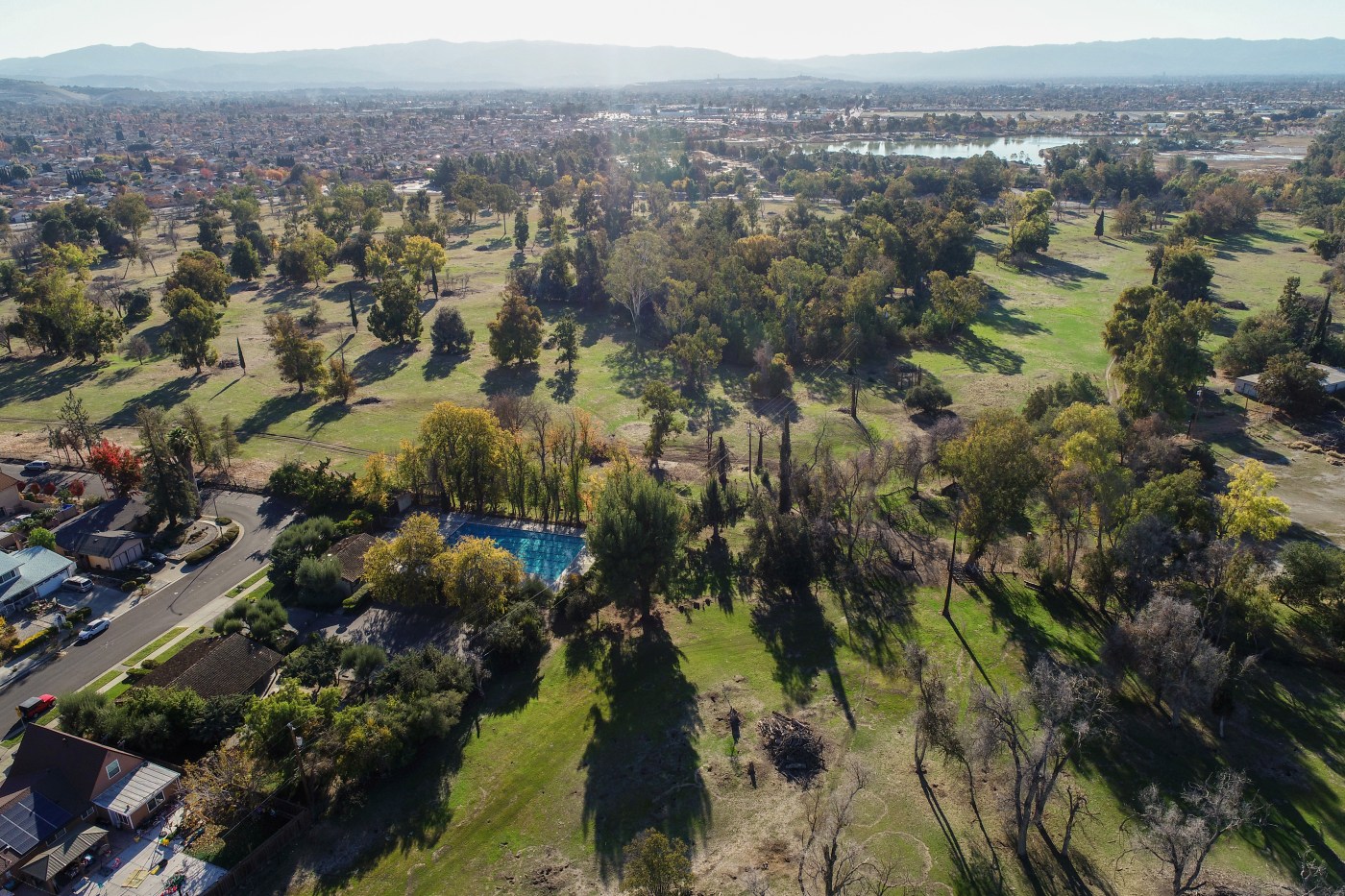SAN JOSE — A potential vast redevelopment of a shuttered San Jose golf course has drawn support from residents who largely preferred low-density housing instead of high-density apartments for the project.
The possible development could replace the former site of the Pleasant Hills Golf Course at the northeast corner of South White and Tully roads in the Lake Cunningham area of San Jose.
San Jose’s shuttered Pleasant Hills Golf Course, 2022. (Shae Hammond/Bay Area News Group)
Residents were asked about their preferences for development on the site during multiple engagements this year with the community.
City officials and developers sought to ascertain neighborhood preferences regarding residential, commercial, open spaces, amenities, transportation, sustainability, green buildings and community programs.
Elevated view of Pleasant Hills Golf Course in the Berryessa district of San Jose, 2022. (Shae Hammond/Bay Area News Group)
San Jose-based Lakeside Community, a real estate venture headed by veteran Bay Area executives Tony Arreola and Mark Lazzarini, has proposed the redevelopment.
“This is a rare opportunity to plan such a large site,” Lazzarini said.
The site totals roughly 114 acres. The land has been fallow since the golf course closed two decades ago.
“We are grateful for the time and thought that local residents and business owners have invested in the community workshops and online surveys,” Arreola said. “We have been eager to hear their vision” for the site’s future.
The potential redevelopment of the old golf course arrives at a time when state mandates oblige San Jose to craft and launch the development of 62,000 housing units over the next eight years.
“Community members prioritized a variety of new market-rate homes and emphasized home ownership,” Lakeside Community stated in a prepared release.
The nature of the Lake Cunningham area played a big role in what the residents who participated in the in-person and virtual meetings expressed as preferences.
“Among their range of priorities, participants envisioned a development that is cohesive with the character of the existing neighborhood, which is comprised primarily of single-family homes,” Lakeside Community stated.
A number of other priorities emerged, in addition to housing.
Related Articles
California YIMBY group endorses Silicon Valley billionaire’s California Forever project
Black Cultural Zone hub in East Oakland pushes ahead with bank grant
San Jose OKs new protections for tens of thousands of mobile home park residents
San Jose waives key building fees to spur downtown housing highrises
Big San Jose affordable housing project lands key construction loan
“The community also expressed a desire for open space and neighborhood-serving retail that can include locally-owned businesses and restaurants,” Lakeside Community said.
Here are some details of the preferences that San Jose residents expressed, according to a post on a city webpage:
— Residential preferences were single-family homes, townhomes and duplexes. Less popular were low-rise, mid-rise and highrise apartment buildings, as well as accessory dwelling units and fourplexes.
— Commercial preferences were small retail and restaurants, community center and community gathering spaces, and a mid-sized grocery store. Relatively unpopular were large retail buildings, assisted living sites and office buildings.
— Open spaces and amenities preferences were playgrounds, natural and open spaces, a plaza and community gardens. Picnic areas, a dog park, sport courts and fields and outdoor exercise equipment were less popular.
— Community programs and environmental preferences included native and drought-tolerant plantings, green storm drainage, and solar and other green energy components. Less popular were sustainable building practices, support for veterans, support for unhoused people, spaces for special events, cultural programming, local workforce training, local hiring and neighborhood business incubators.
The redevelopment proposal could become an example for San Jose as other infill project proposals emerge.
“It should serve as a model for future development at other large opportunity sites in San Jose as we work collaboratively to meet our region’s unprecedented housing needs,” Arreola said.
The draft principles that have emerged from the prior engagements with the community will be presented at a final community workshop scheduled for August. After that, the overall guidelines will be presented to the San Jose City Council for final approval, likely in September.
“Years of extreme drought have essentially left a blank canvas at Pleasant Hills, upon which we hope to design a model of environmental and ecological design,” Lazzarini said.












